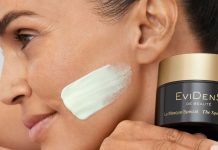You were at the beach for a long time, and the next day, instead of a smooth tan, your skin got covered with rash or blisters. Sounds familiar? Of course, you might think that you have eaten something wrong, but it’s probably sun allergy or photo dermatitis.

What Are the Symptoms of Sun Allergy?
This allergy, just like any other, is the reaction of the immune system to an external stimulus. Common symptoms include redness, itching, rash; in severe cases swelling may occur, including the swelling of the mucous membranes. The symptoms may develop after only a few minutes of skin exposure to sunlight. Why someone suffers from this type of allergy, while others peacefully sunbathe for several hours in a row, is still unknown. People with light skin type, especially women and young children, who do not yet have a strong immune system, are most heavily predisposed to sun allergy. There is also evidence that predisposition to sun allergy can be inherited.
What Causes Sun Allergy?
It is proved that sun’s rays themselves are not allergic. Skin redness, hives and blisters are the consequence of sunlight’s interaction with other factors. This is primarily cosmetic products, including sunscreens, and even tiny particles of flowering plants’ pollen. Sun allergy can be triggered by serious diseases such as hepatitis and cirrhosis of the liver, disturbance of the immune system, blood diseases, as well as long-term use of certain drugs such as antibiotics, barbiturates, or oral contraceptives.
Sun Allergy Treatment
How can you eliminate the symptoms of sun allergy? The treatment of pulmonary manifestations involves superimposition of cold compresses to the affected areas, spraying them with an atomizer. If the situation is serious, be sure to consult a doctor. The allergist will prescribe antihistamines and, if necessary, hormonal agents. If this does not work, sessions of phototherapy can be assigned. It is when the patient’s skin is constantly exposed to UV rays in small doses, thus “the effect of tolerance” toward the sun is achieved. If you are very patient and lucky with the doctor, sometimes you can determine the factor, which influenced the development of sun allergy by elimination. If the agent is identified, it is often enough to eliminate the use of the cosmetic products, perfumes or medicines that have caused an allergic reaction.
How to Prevent Sun Allergy?
There are a few preventive ways to reduce the risk of sun allergy. Immediately after the winter limit exposure to sun, use makeup with a high degree of protection and only after consulting a dermatologist about its safety; sunbathe in the shade, wear light color clothing – hats, pants and long-sleeved shirts.











